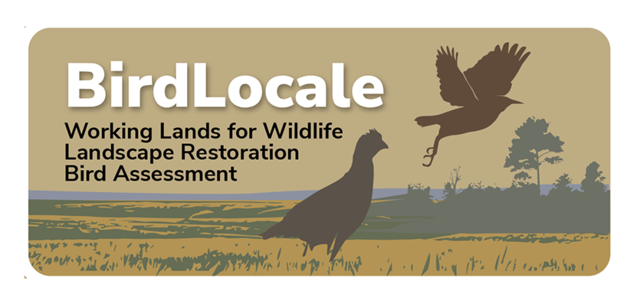-
Trout Unlimited Brook Trout Atlas
-
by
Tab Manager
—
published
Apr 10, 2024
—
last modified
Apr 21, 2025 06:26 PM
—
filed under:
Brook Trout,
Trout Unlimited,
Maps and Data,
WLFW
The following interactive atlases provide a means to explore mapped data related to brook trout populations, habitats, and threats in local watersheds and across their eastern range.
Located in
Learning & Tech Transfer
/
Apps, Maps, & Data
-
U.S. Fire Administration
-
by
Tab Manager
—
published
Aug 31, 2022
—
filed under:
Fire,
Wildfire,
Wildland Fire Research Journals,
Wildland Fire
As an entity of the U.S. Department of Homeland Security’s Federal Emergency Management Agency (FEMA), the mission of the U.S. Fire Administration is to support and strengthen fire and emergency medical services (EMS) and stakeholders to prepare for, prevent, mitigate and respond to all hazards.
Located in
Resources
/
Research
/
Research Journals
-
U.S. Fish & Wildlife Service Fire Management
-
by
Tab Manager
—
published
Apr 30, 2021
—
last modified
May 03, 2021 01:34 PM
—
filed under:
Wildland Fire,
Prescribed Fire,
USFWS
The U.S. Fish & Wildlife Service has assumed a leadership role in the use of fire to maintain and support healthy ecosystems. The Service has traditionally led DOI agencies in using prescribed fire to reduce dangerously overgrown vegetation, known as "hazardous fuels," keeping lands in good condition while accomplishing the most with the least funding.
Located in
Prescribed Burning
/
Overview
-
USDA Agricultural Research Service National Programs
-
by
Tab Manager
—
published
Dec 30, 2020
—
last modified
Mar 25, 2021 11:52 PM
—
filed under:
Agricultural Research Service,
ARS,
Research,
USDA,
Science and Research Products
ARS research is organized into National Programs. These programs serve to bring coordination, communication, and empowerment to approximately 690 research projects carried out by ARS. The National Programs focus on the relevance, impact, and quality of ARS research.
Located in
Resources
/
General Resources Holdings
-
USDA Forest Service Prescribed Fire
-
by
Tab Manager
—
published
Apr 30, 2021
—
filed under:
Wildland Fire,
Prescribed Burning,
Prescribed Fire,
Forest Service,
USDA
Prescribed fires, also known as prescribed burns or controlled burns, refer to the controlled application of fire by a team of fire experts under specified weather conditions to restore health to ecosystems that depend on fire.
Located in
Prescribed Burning
/
Overview
-
USDA Forest Service Private Land
-
by
Tab Manager
—
published
Oct 22, 2024
—
last modified
Oct 22, 2024 12:21 AM
—
filed under:
WLFW,
Working Lands for Wildlife,
Eastern Deciduous Forests,
USDA Forest Service,
Resources
Did you know that more than half the forest land in the United States is owned and managed by some 10.6 million private forest owners? These working forests benefit us all.
Located in
Resources
-
USDA Invests More than $48.6 Million to Manage Risks, Combat Climate Change
-
by
Tab Manager
—
published
Mar 09, 2023
—
last modified
Mar 09, 2023 02:02 PM
—
filed under:
Climate Change,
Working Lands for Wildlife,
WLFW,
USDA
WASHINGTON, Feb. 21, 2023 – The U.S. Department of Agriculture (USDA) will invest more than $48.6 million this year through the Joint Chiefs’ Landscape Restoration Partnership for projects that mitigate wildfire risk, improve water quality, restore forest ecosystems, and ultimately contribute to USDA’s efforts to combat climate change. This year, the USDA Forest Service and Natural Resources Conservation Service (NRCS) will invest in projects, including 14 new projects, bringing together agricultural producers, forest landowners, and National Forest System lands to improve forest health using available Farm Bill conservation programs and other authorities.
Located in
Learning & Tech Transfer
/
General Resources and Publications
/
Inbox
-
USDA Long-Term Agroecosystem Research Network
-
by
Tab Manager
—
published
Dec 30, 2020
—
last modified
Mar 25, 2021 11:53 PM
—
filed under:
ARS,
USDA,
LATR,
Agricultural Research Service,
Research,
Long-Term Agroecosystem Research Network,
Science and Research Products
The Long-Term Agroecosystem Research (LTAR) Network is a new network developing national strategies for the sustainable intensification of agricultural production.
Located in
Resources
/
General Resources Holdings
-
USDA Regional Biomass Research Centers (RBRC)
-
by
Tab Manager
—
published
Dec 30, 2020
—
last modified
Mar 25, 2021 11:53 PM
—
filed under:
ARS,
USDA,
Agricultural Research Service,
RBRC,
Regional Biomass Research Centers,
Science and Research Products,
Research
This USDA-led effort (RBRC), which is coordinated by ARS and the U.S. Forest Service, is tasked with ensuring that dependable feedstock supplies use agricultural and forestry feedstocks to produce advanced biofuels that meet legislated goals and market demand, and maximizing participation of U.S. rural areas in an emerging and profitable biofuels and biobased products economy.
Located in
Resources
/
General Resources Holdings
-
USGS Wildland Fire Science
-
by
Tab Manager
—
published
Aug 31, 2022
—
filed under:
Fire,
Wildfire,
Wildland Fire Research Journals,
Wildland Fire
USGS Fire Science is fundamental to understanding the causes, consequences, and benefits of wildfire and helps prevent and manage larger, catastrophic events.
Located in
Resources
/
Research
/
Research Journals


